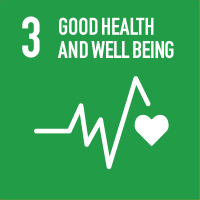Studying at the University of Verona
Here you can find information on the organisational aspects of the Programme, lecture timetables, learning activities and useful contact details for your time at the University, from enrolment to graduation.
Study Plan
The Study Plan includes all modules, teaching and learning activities that each student will need to undertake during their time at the University.
Please select your Study Plan based on your enrollment year.
1° Year
| Modules | Credits | TAF | SSD |
|---|
2° Year It will be activated in the A.Y. 2025/2026
| Modules | Credits | TAF | SSD |
|---|
3° Year It will be activated in the A.Y. 2026/2027
| Modules | Credits | TAF | SSD |
|---|
| Modules | Credits | TAF | SSD |
|---|
| Modules | Credits | TAF | SSD |
|---|
| Modules | Credits | TAF | SSD |
|---|
Legend | Type of training activity (TTA)
TAF (Type of Educational Activity) All courses and activities are classified into different types of educational activities, indicated by a letter.
Promoting healthy lifestyles - MOTIVAZIONE E CAMBIAMENTO DEGLI STILI DI VITA SALUTARI (2024/2025)
Teaching code
4S010731
Teacher
Credits
1
Language
Italian
Scientific Disciplinary Sector (SSD)
MED/45 - NURSING
Period
2 SEMESTRE PROFESSIONI SANITARIE dal Jan 7, 2025 al Sep 30, 2025.
Courses Single
Not Authorized
Program
Description of the main socio-cognitive models supporting the motivation to change with respect to lifestyles in the individual: • The health belief model (Rosenstock, Becker 1974) • The theory of cognitive dissonance • Self-efficacy and healthy behaviors (A. Bandura 1991) • Attribution style theory (health locus of control) by JB Rotter 1966 • The theory of reasoned action (Fishbein and Ajzen, 1975) • The transtheoretical model of the stages of change (JOProchaska and Di Clemente) Definition of health literacy and levels of competence. Groups at risk for low health literacy. Assessing the level of health literacy in chronically ill patients: application in daily practice. Strategies for improving health literacy: the teach back method. Principles for the construction of written educational material according to the “Simply Put" a guide for creating easy-to-understand materials”, Centers for Disease Control and Prevention U.S. Department of Health and Human Services
Bibliography
Didactic methods
Theoretical lessons Brainstorming on Locus of control Presentation of an example on the application of the theory of reasoned action. Group work on the analysis of written educational materials by applying the PEMAT test
Learning assessment procedures
Integrated written exam for the 3 modules. Exam carried out in person Pre-registration required via Esse 3 At the discretion of the teachers, accept non-registered students Request to adapt the exam tests: an email must be sent with all the necessary information to inclusion@ateneo.univr.it at least 20 days before the date set for the exam. Exam time 1 hour Type of questions: open and closed or multiple choice. Maximum 5 questions
Evaluation criteria
Evaluation on a 30ml scale Closed questions 1 point Closed multiple choice questions 0.5 pt Open questions with short answers 1 pt Open questions from 3 to 5 pts depending on the taxonomy (knowledge, application, analysis, reflection) Time 3 working days from publication of the results to refuse the grade request to view the exam to be sent via university email to the individual teacher.
Exam language
italiano

